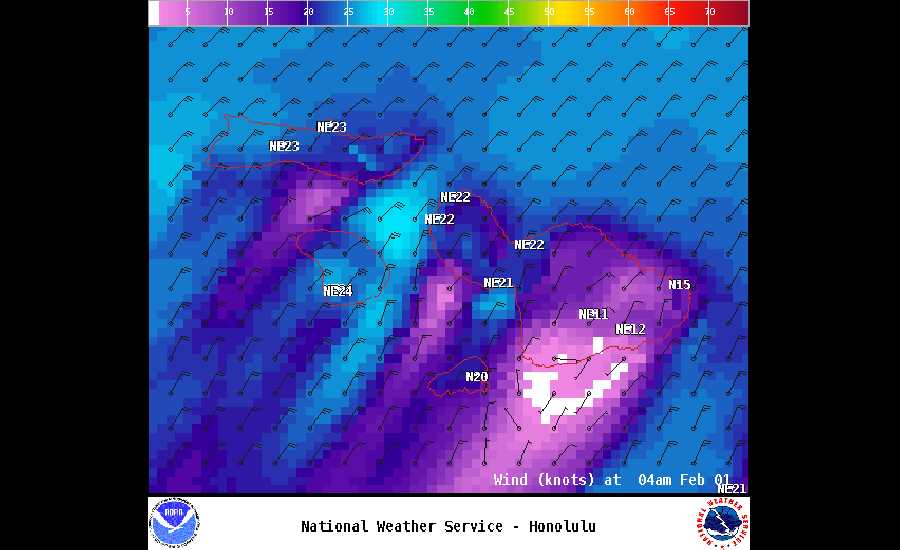February 01, 2019 Surf Forecast
Swell Summary
Outlook through Thursday February 07: The current northeast swell will continue to keep surf elevated along east facing shores through Friday night before gradually lowering over the weekend. Surf heights may once again pick up along east facing shores toward the middle of next week. The current advisory level west northwest swell will lower gradually Friday and Friday night. Another moderate size west northwest swell is expected to fill on Saturday, peak late Saturday and Saturday night, then lower gradually on Sunday. Surf heights may reach advisory levels along north and west facing shorelines. A slightly smaller west northwest swell is on tap for Monday and Tuesday with a slightly larger west northwest swell expected Tuesday night and Wednesday. No other significant swells are expected.
Surf heights are forecast heights of the face, or front, of waves. The surf forecast is based on the significant wave height, the average height of the one third largest waves, at the locations of the largest breakers. Some waves may be more than twice as high as the significant wave height. Expect to encounter rip currents in or near any surf zone.
North
am ![]()
![]() pm
pm ![]()
![]()
Surf: Chest to head high mix of NW ground swell and NNE medium period swell with occasional slightly overhead sets.
Conditions: Sideshore texture/chop with E winds 10-15mph in the morning increasing to 15-20mph in the afternoon.
South
am ![]()
![]() pm
pm ![]()
![]()
Surf: Waist to chest high WNW medium period swell in the morning with occasional shoulder high sets. This drops into the ankle to knee range for the afternoon.
Conditions: Clean with NE winds less than 5mph in the morning shifting NNE for the afternoon.
West
am ![]()
![]() pm
pm ![]()
![]()
Surf: Chest to shoulder high NNE medium period swell.
Conditions: Clean with ENE winds 10-15mph in the morning increasing to 15-20mph in the afternoon.
**Click directly on the images below to make them larger. Charts include: Maui County projected winds, tides, swell direction & period and expected wave heights.**
Data Courtesy of NOAA.gov and SwellInfo.com
















